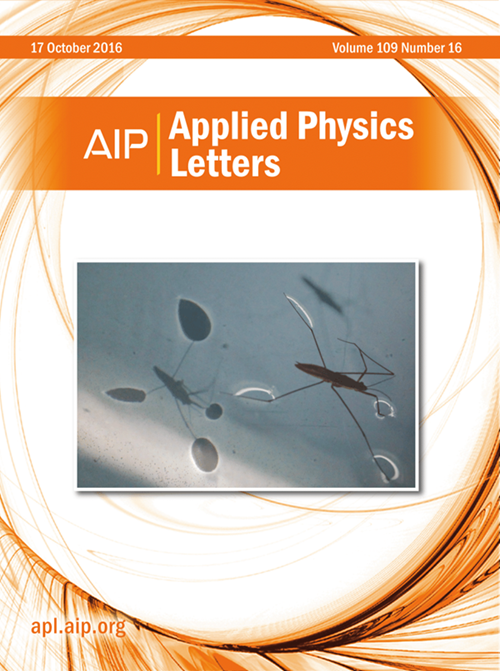三角形PtBi2的高阶平面霍尔效应研究
IF 3.5
2区 物理与天体物理
Q2 PHYSICS, APPLIED
引用次数: 0
摘要
三角形PtBi2 (t-PtBi2)作为Weyl半金属,其电子带在费米能级附近具有三重简并点,使其具有丰富的电子性质。以往的研究已经测量了t-PtBi2的平面霍尔效应(PHE)和面内各向异性磁阻(AMR)。我们注意到他们的实验结果在PHE和AMR中都表现出高阶特征,但这些特征没有被系统地研究。在我们的工作中,我们对t-PtBi2的PHE和AMR进行了更系统的测量和分析。PHE和AMR在低温和强磁场下均表现出高阶特征,这些特征与电阻和温度曲线的“导通”行为具有相似的温度和磁场依赖性,表明它们具有共同的物理根源。我们进一步总结了t-PtBi2中出现高阶PHE的关键条件,这将有助于理解高阶特征的起源。此外,我们对t-PtBi2的AMR进行了计算模拟,结果与实验结果一致,表明高阶特征是费米表面各向异性和磁电阻缩放行为共同作用的结果。我们的发现将有助于更深入地了解非磁性拓扑材料中高阶特征的起源。本文章由计算机程序翻译,如有差异,请以英文原文为准。
Investigation on high-order planar Hall effect in trigonal PtBi2
The trigonal PtBi2 (t-PtBi2) as a Weyl semimetal possessing triply degenerate points in its electronic bands near the Fermi level endows it with rich electronic properties. Previous studies have already measured the planar Hall effect (PHE) and in-plane anisotropic magnetoresistance (AMR) of t-PtBi2. We noticed that their experimental results exhibited high-order features in both the PHE and AMR, yet these features were not systematically investigated. In our work, we conducted more systematic measurements and analyses of the PHE and AMR in t-PtBi2. Both PHE and AMR show high-order features under low temperatures and strong magnetic fields, and these features share a similar temperature and magnetic field dependence with the “turn-on” behavior of resistance and temperature curves, indicating a common physical origin for them. We further summarize the critical conditions for the emergence of high-order PHE in t-PtBi2, which will help to understand the origin of high-order features. In addition, we performed computational simulations on the AMR of t-PtBi2, and the results were consistent with the experiments, indicating the high-order features are the result of the combined contribution of the Fermi surface anisotropy and the scaling behavior of magnetoresistance. Our findings will contribute to a deeper understanding of the origins of high-order features in non-magnetic topological materials.
求助全文
通过发布文献求助,成功后即可免费获取论文全文。
去求助
来源期刊

Applied Physics Letters
物理-物理:应用
CiteScore
6.40
自引率
10.00%
发文量
1821
审稿时长
1.6 months
期刊介绍:
Applied Physics Letters (APL) features concise, up-to-date reports on significant new findings in applied physics. Emphasizing rapid dissemination of key data and new physical insights, APL offers prompt publication of new experimental and theoretical papers reporting applications of physics phenomena to all branches of science, engineering, and modern technology.
In addition to regular articles, the journal also publishes invited Fast Track, Perspectives, and in-depth Editorials which report on cutting-edge areas in applied physics.
APL Perspectives are forward-looking invited letters which highlight recent developments or discoveries. Emphasis is placed on very recent developments, potentially disruptive technologies, open questions and possible solutions. They also include a mini-roadmap detailing where the community should direct efforts in order for the phenomena to be viable for application and the challenges associated with meeting that performance threshold. Perspectives are characterized by personal viewpoints and opinions of recognized experts in the field.
Fast Track articles are invited original research articles that report results that are particularly novel and important or provide a significant advancement in an emerging field. Because of the urgency and scientific importance of the work, the peer review process is accelerated. If, during the review process, it becomes apparent that the paper does not meet the Fast Track criterion, it is returned to a normal track.
 求助内容:
求助内容: 应助结果提醒方式:
应助结果提醒方式:


